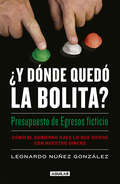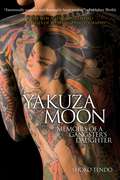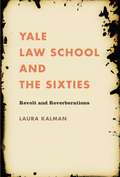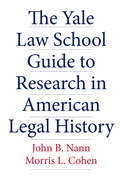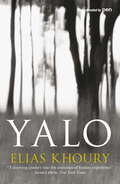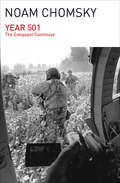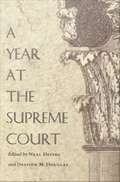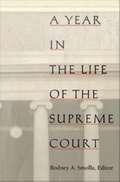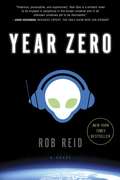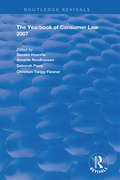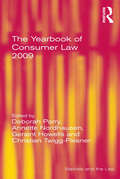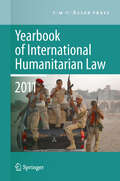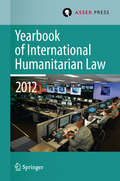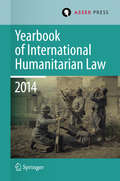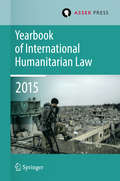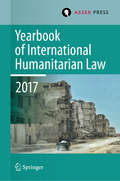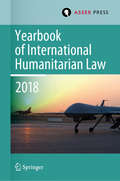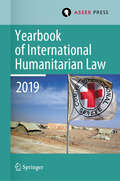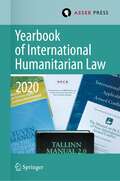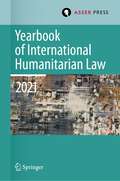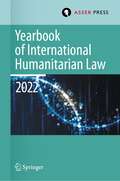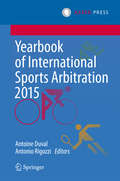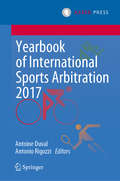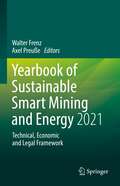- Table View
- List View
¿Y dónde quedó la bolita?: Cómo el gobierno hace lo que quiere con nuestro dinero
by Leonardo Nuñez¿Sabes qué hace realmente el gobierno con nuestro dinero? ¿Por qué el gobierno nos dice que gasta de una manera y lo hace de otra? ¿Por qué el gasolinazo es una pésima decisión del gobierno? ¿En qué se gasta realmente el dinero de los mexicanos? Este libro pretende dar respuesta a estas y otras preguntas y, más importante aún, ofrece a los ciudadanos las herramientas necesarias para conocer la situación real del gasto en cualquier tema. Para la mayoría de los ciudadanos esto es un misterio. Cuando alguien quiere conocer cómo se gasta, de manera lógica acude a las cifras del Presupuesto de Egresos de la Federación (PEF), eso que cada año aprueban los diputados y debería indicar cuánto y cómo se gastará. Sin embargo, aquí sólo hay verdades a medias. El 30 de abril de cada año aparece otro documento que revela historias muy diferentes y recibe muy poca atención: la Cuenta Pública. Al revisarla encontraremos, por ejemplo, que en 16 años de vida "democrática" nuestro gobierno ha gastado 4.1 billones de pesos más de lo que nos había dicho (casi 20% del PIB o 100 veces el presupuesto de la UNAM); que en 2016 ¡se usaron 613 mil millones de pesos más de los presupuestados!, que una cuarta parte de todo lo que se gasta termina en lugares diferentes a los que creeríamos, o que debimos saber de los desfalcos de Javier Duarte en Veracruz, al menos, desde 2013. Así las cosas, el uso de nuestros recursos es como el juego popular: en dónde quedó la bolita. ¡Urge detener los casos de corrupción y uso inadecuado del dinero público! ¡Es tiempo de cambiar las cosas!
Yakuza Moon: Memoirs of a Gangster's Daughter
by Louise Heal Shoko TendoYakuza Moon is the shocking, yet intensely moving memoir of 37-yearold Shoko Tendo, who grew up the daughter of a yakuza boss. Tendo lived her life in luxury until the age of six, when her father was sent to prison, and her family fell into terrible debt. Bullied by classmates who called her "the yakuza girl," and terrorized at home by a father who became a drunken, violent monster after his release from prison, Tendo rebelled. A regular visitor to nightclubs at the age of 12, she soon became a drug addict and a member of a girl gang. By the age of 15 she found herself sentenced to eight months in a juvenile detention center.Adulthood brought big bucks and glamour when Tendo started working as a bar hostess during Japan’s booming bubble economy of the nineteen- eighties. But among her many rich and loyal patrons there were also abusive clients, one of whom beat her so badly that her face was left permanently scarred. When her mother died, Tendo plunged into such a deep depression that she tried to commit suicide twice.Tendo takes us through the bad times with warmth and candor, and gives a moving and inspiring account of how she overcame a lifetime of discrimination and hardship. Getting tattooed, from the base of her neck to the tips of her toes, with a design centered on a geisha with a dagger in her mouth, was an act that empowered her to start making changes in her life. She quit her job as a hostess. On her last day at the bar she looked up at the full moon, a sight she never forgot. The moon became a symbol of her struggle to become whole, and the title of the book she wrote as an epitaph for herself and her family.
Yale Law School and the Sixties
by Laura KalmanThe development of the modern Yale Law School is deeply intertwined with the story of a group of students in the 1960s who worked to unlock democratic visions of law and social change that they associated with Yale's past and with the social climate in which they lived. During a charged moment in the history of the United States, activists challenged senior professors, and the resulting clash pitted young against old in a very human story. By demanding changes in admissions, curriculum, grading, and law practice, Laura Kalman argues, these students transformed Yale Law School and the future of American legal education.Inspired by Yale's legal realists of the 1930s, Yale law students between 1967 and 1970 spawned a movement that celebrated participatory democracy, black power, feminism, and the counterculture. After these students left, the repercussions hobbled the school for years. Senior law professors decided against retaining six junior scholars who had witnessed their conflict with the students in the early 1970s, shifted the school's academic focus from sociology to economics, and steered clear of critical legal studies. Ironically, explains Kalman, students of the 1960s helped to create a culture of timidity until an imaginative dean in the 1980s tapped into and domesticated the spirit of the sixties, helping to make Yale's current celebrity possible.
The Yale Law School Guide to Research in American Legal History (Yale Law Library Series in Legal History and Reference)
by John B. Nann Morris L. CohenThe study of legal history has a broad application that extends well beyond the interests of legal historians. An attorney arguing a case today may need to cite cases that are decades or even centuries old, and historians studying political or cultural history often encounter legal issues that affect their main subjects. Both groups need to understand the laws and legal practices of past eras. This essential reference is intended for the many nonspecialists who need to enter this arcane and often tricky area of research.
Yalo
by Elias KhouryYalo was a soldier on one of the many sides in Lebanon's sectarian civil war, before becoming a deserter and a thief, a nightwatchman in Paris, an arms smuggler, and then a rapist. And then he falls in love with his victim - who turns him in to the police. This novel is a modern Thousand and One Nights, a series of confessions extracted under torture, a recitation of all of his memories, all his sorrows, all his guilt - and of the other crimes his interrogators have him confess to. Beirut and the legacy of the wars of the Middle East are the texture of Elias Khoury's extraordinary literary achievement.
Year 501: The Conquest Continues (Chomsky Perspectives Ser. #Vol. 63)
by Noam Chomsky"The great work of subjugation and conquest" has changed little over the years. Analyzing Haiti, Latin America, Cuba, Indonesia, and even packets of the Third World developing in the United States. Noam Chomsky draws parallels between the genocide of colonial times and the murder and exploitation associated with modern-day imperialism.
A Year at the Supreme Court
by Neal Devins Davison M. DouglasThe United States Supreme Court's 2002-03 term confounded Court watchers. The same Rehnquist Court that many had seen as solidly conservative and unduly activist--the Court that helped decide the 2000 presidential election and struck down thirty-one federal statutes since 1995--issued a set of surprising, watershed rulings. In a term filled with important and unpredictable decisions, it upheld affirmative action, invalidated a same-sex sodomy statute, and reversed a death sentence due to ineffective assistance of counsel. With essays focused on individual Justices, Court practices, and some of last year's most important rulings, this volume explores the meaning and significance of the Court's 2002-03 term. Seasoned Supreme Court advocates and journalists from The New Republic, The Los Angeles Times, Newsweek, National Journal, Slate, and Legal Times grapple with questions about the Rehnquist Court's identity and the Supreme Court's role in the political life of the country. Some essays consider the role of "swing" Justices Sandra Day O'Connor and Anthony Kennedy within a Court that divides 5-4 more than any other group of Justices in the nation's history. Others examine the political reaction to and legal context of the Court's Lawrence v. Texas decision declaring a Texas law criminalizing homosexual sodomy unconstitutional. Contributors analyze the Court's rulings on affirmative action and reassess its commitment to states' rights. Considering the Court's practices, one advocate explores the use and utility of amicus curiae, or "friend of the court" briefs, while another reflects on indications of an increased openness by the Court to public scrutiny. Two advocates who argued cases before the Court--one related to hate speech and the other to a "three strikes and you're out" criminal statute--offer vivid accounts of their experiences. Intended for general readers, A Year at the Supreme Court is for all those who want to understand the Rehnquist Court and its momentous 2002-03 term. Contributors Erwin Chemerinsky Neal Devins Davison M. Douglas David J. Garrow Dahlia Lithwick Tony Mauro Carter Phillips Ramesh Ponnuru Jeffrey Rosen David G. Savage Rodney A. Smolla Stuart Taylor Jr.
A Year in the Life of the Supreme Court
by Paul Barrett Richard Carelli Marcia Coyle Lyle Denniston Aaron Epstein Kay Kindred Tony Mauro David Savage Stephen WermielDespite its importance to the life of the nation and all its citizens, the Supreme Court remains a mystery to most Americans, its workings widely felt but rarely seen firsthand. In this book, journalists who cover the Court--acting as the eyes and ears of not just the American people, but the Constitution itself--give us a rare close look into its proceedings, the people behind them, and the complex, often fascinating ways in which justice is ultimately served. Their narratives form an intimate account of a year in the life of the Supreme Court. The cases heard by the Surpreme Court are, first and foremost, disputes involving real people with actual stories. The accidents and twists of circumstance that have brought these people to the last resort of litigation can make for compelling drama. The contributors to this volume bring these dramatic stories to life, using them as a backdrop for the larger issues of law and social policy that constitute the Court's business: abortion, separation of church and state, freedom of speech, the right of privacy, crime, violence, discrimination, and the death penalty. In the course of these narratives, the authors describe the personalities and jurisprudential leanings of the various Justices, explaining how the interplay of these characters and theories about the Constitution interact to influence the Court's decisions. Highly readable and richly informative, this book offers an unusually clear and comprehensive portrait of one of the most influential institutions in modern American life.
Year Zero: A Novel
by Rob ReidAn alien advance party was suddenly nosing around my planet. Worse, they were lawyering up. . . . In the hilarious tradition of The Hitchhiker's Guide to the Galaxy, Rob Reid takes you on a headlong journey through the outer reaches of the universe--and the inner workings of our absurdly dysfunctional music industry. Low-level entertainment lawyer Nick Carter thinks it's a prank, not an alien encounter, when a redheaded mullah and a curvaceous nun show up at his office. But Frampton and Carly are highly advanced (if bumbling) extraterrestrials. And boy, do they have news. The entire cosmos, they tell him, has been hopelessly hooked on humanity's music ever since "Year Zero" (1977 to us), when American pop songs first reached alien ears. This addiction has driven a vast intergalactic society to commit the biggest copyright violation since the Big Bang. The resulting fines and penalties have bankrupted the whole universe. We humans suddenly own everything--and the aliens are not amused. Nick Carter has just been tapped to clean up this mess before things get ugly, and he's an unlikely galaxy-hopping hero: He's scared of heights. He's also about to be fired. And he happens to have the same name as a Backstreet Boy. But he does know a thing or two about copyright law. And he's packing a couple of other pencil-pushing superpowers that could come in handy. Soon he's on the run from a sinister parrot and a highly combustible vacuum cleaner. With Carly and Frampton as his guides, Nick now has forty-eight hours to save humanity, while hopefully wowing the hot girl who lives down the hall from him."Hilarious, provocative, and supersmart, Year Zero is a brilliant novel to be enjoyed in perpetuity in the known universe and in all unknown universes yet to be discovered."--John Hodgman, resident expert, The Daily Show with Jon StewartFrom the Hardcover edition.
The Yearbook of Consumer Law 2007 (Routledge Revivals)
by Geraint Howells Annette Nordhausen Deborah Parry Christian Twigg-FlesnerFirst published in 2007, The Yearbook of Consumer Law provides a valuable guide to developments in the consumer law field with a domestic, regional and international dimension. The volume presents a range of peer-reviewed scholarly articles, analytical in approach and focusing on specific areas of consumer law such as sales, credit and safety, as well as more general issues, such as consumer law theory. The book also includes a section dedicated to significant developments during the period covered, such as key legislative developments or important court decisions. The book provides an essential resource for all those, academic and practitioner, working in the areas of consumer law and policy.
The Yearbook of Consumer Law 2009 (Markets and the Law)
by Geraint Howells Annette NordhausenThe Yearbook of Consumer Law provides a valuable outlet for high quality scholarly work which tracks developments in the consumer law field with a domestic, regional and international dimension. The 2009 volume presents a range of peer-reviewed scholarly articles, analytical in approach and focusing on specific areas of consumer law such as credit, consumer redress and the impact of the European Union on consumer law. The book also includes a section dedicated to significant developments during the period covered, such as key legislative developments and important court decisions. It is an essential resource for all academics and practitioners working in the areas of consumer law and policy.
Yearbook of International Humanitarian Law 2011 - Volume 14
by Michael N. Schmitt Louise ArimatsuThe Yearbook of International Humanitarian Law is the world's only annual publication devoted to the study of the laws governing armed conflict. It provides a truly international forum for high-quality, peer-reviewed academic articles focusing on this crucial branch of international law. Distinguished by contemporary relevance, the Yearbook of International Humanitarian Law bridges the gap between theory and practice and serves as a useful reference tool for scholars, practitioners, military personnel, civil servants, diplomats, human rights workers and students.
Yearbook of International Humanitarian Law Volume 15, 2012
by Terry D. Gill Robin Geiß Robert Heinsch Tim Mccormack Christophe Paulussen Jessica Dorsey'Child Soldiers and the Lubanga Case' and 'The Tallinn Manual on the International Law Applicable to Cyber Warfare' are the two central themes of this volume. Each of these timely topics is addressed from three different angles, providing a truly comprehensive analysis of the subject. The book also features an article on the duty to investigate civilian casualties during armed conflict and its implementation in practice and an elaborate year in review, discussing developments that occurred in 2012. The Yearbook of International Humanitarian Law is the world's only annual publication devoted to the study of the laws governing armed conflict. It provides a truly international forum for high-quality, peer-reviewed academic articles focusing on this crucial branch of international law. Distinguished by contemporary relevance, the Yearbook of International Humanitarian Law bridges the gap between theory and practice and serves as a useful reference tool for scholars, practitioners, military personnel, civil servants, diplomats, human rights workers and students.
Yearbook of International Humanitarian Law Volume 17, 2014
by Terry D. Gill Robin Geiß Heike Krieger Tim Mccormack Christophe Paulussen Jessica DorseyThis volume commemorates the centenary of the FirstWorld War (1914-2014) and aims to capture 100 years of warfare evolution. Amongthe main issues addressed are the changing nature of means and methods ofwarfare, the law of weaponry, and challenges to humanitarian assistance andprotection of the civilian population affected by armed conflict. Specifictopics include the legal regime governing nuclear weapons, the prohibition ofchemical weapons and arms control, the evolution of naval warfare, asymmetricconflicts, the law of occupation and cultural property. A comprehensive Year in Review also describes themost important events and legal developments that took place in 2014. The Yearbook ofInternational Humanitarian Law is the world's only annual publicationdevoted to the study of the laws governing armed conflict. It provides a trulyinternational forum for high-quality, peer-reviewed academic articles focusingon this crucial branch of international law. Distinguished by contemporaryrelevance, the Yearbook of InternationalHumanitarian Law bridges the gap between theory and practice and serves asa useful reference tool for scholars, practitioners, military personnel, civilservants, diplomats, human rights workers and students.
Yearbook of International Humanitarian Law Volume 18, 2015 (Yearbook of International Humanitarian Law #18)
by Terry D. GillThe general theme of this volume is contemporary armed conflicts and their implications for international humanitarian law. It is elaborated upon in several chapters, dealing with a variety of topics related to, among other things, the situations in Libya, Transnistria, Mexico, Syria/Iraq (Islamic State) and Israel/Gaza. Besides these chapters that can be connected to the general theme, this volume also contains a chapter dedicated to an international criminal law topic (duress), as well as a Year in Review, describing the most important events and legal developments that took place in 2015. The Yearbook of International Humanitarian Law is the world’s only annual publication devoted to the study of the laws governing armed conflict. It provides a truly international forum for high-quality, peer-reviewed academic articles focusing on this crucial branch of international law. Distinguished by contemporary relevance, the Yearbook of International Humanitarian Law bridges the gap between theory and practice and serves as a useful reference tool for scholars, practitioners, military personnel, civil servants, diplomats, human rights workers and students.
Yearbook of International Humanitarian Law, Volume 20, 2017 (Yearbook of International Humanitarian Law #20)
by Terry D. Gill Tim McCormack Robin Geiß Heike Krieger Christophe PaulussenThe main theme of this volume of the Yearbook of International Humanitarian Lawis the development and interpretation of international humanitarian law (IHL). It iselaborated upon in several chapters that examine the role of non-state armed groupsin the development and interpretation of IHL, the impact of international criminal lawon the development of IHL, the notion of external non-international armed conflicts,and the regulation of prolonged occupation under international law.The second theme of this volume is dedicated to targeting in armed conflicts. Specifictopics include precautions in attack in urban and siege warfare, the targeting of theIslamic State’s religious personnel in Iraq and Syria, and the targeting of illicit cropsthrough aerial spraying in Colombia. Besides the chapters that address both themes,this volume also contains a Year in Review describing the most important events andlegal developments that took place in 2017.The Yearbook of International Humanitarian Law is the world’s only annual publicationdevoted to the study of the laws governing armed conflict. It provides a truly internationalforum for high-quality, peer-reviewed academic articles focusing on this crucialbranch of international law. Distinguished by contemporary relevance, the Yearbookof International Humanitarian Law bridges the gap between theory and practice andserves as a useful reference tool for scholars, practitioners, military personnel, civilservants, diplomats, human rights workers and students.
Yearbook of International Humanitarian Law, Volume 21 (Yearbook of International Humanitarian Law #21)
by Terry D. Gill Robin Geiß Heike Krieger Christophe PaulussenThe main theme of this volume of the Yearbook of International Humanitarian Law is weapons law. In several chapters, how International Humanitarian Law (IHL) copes with old and new weapons as well as political developments in regard to military technology is discussed, while in two chapters the significance of non- or less-lethal weapons in peace-keeping and law enforcement operations as well as the legality of lethal autonomous weapon systems under IHL are analysed. Moreover, the volume describes the current status of nuclear deterrence under international law. Another layer is added by examining how IHL influences the programming of automatic target recognition systems using artificial intelligence.The second part of the book contains a historic perspective on the roots of IHL in Europe, which can be traced back to the ninth century, as well as a Year in Review describing the most important events and legal developments in the area of IHL that took place in 2018.The Yearbook of International Humanitarian Law is the world’s only annual publication devoted to the study of the laws governing armed conflict. It provides a truly international forum for high-quality, peer-reviewed academic articles focusing on this crucial branch of international law. Distinguished by contemporary relevance, the Yearbook of International Humanitarian Law bridges the gap between theory and practice and serves as a useful reference tool for scholars, practitioners, military personnel, civil servants, diplomats, human rights workers and students.
Yearbook of International Humanitarian Law, Volume 22 (Yearbook of International Humanitarian Law #22)
by Terry D. Gill Robin Geiß Heike Krieger Christophe PaulussenThe main theme of this volume of the Yearbook of International Humanitarian Law is the 70th anniversary of the Geneva Conventions. The evolution of these crucial treaties and international humanitarian law more generally comes back in six chapters addressing topics such as sieges, compliance, indiscriminate attacks and non-state armed groups.The second part of the book contains a chapter on the acquittal on appeal of Jean-Pierre Bemba Gombo by the International Criminal Court on the basis of command responsibility for war crimes, as well as an extensive Year in Review describing the most important events and legal developments in the area of international humanitarian law that took place in 2019.The Yearbook of International Humanitarian Law is the world’s only annual publication devoted to the study of the laws governing armed conflict. It provides a truly international forum for high-quality, peer-reviewed academic articles focusing on this crucial branch of international law. Distinguished by contemporary relevance, the Yearbook of International Humanitarian Law bridges the gap between theory and practice and serves as a useful reference tool for scholars, practitioners, military personnel, civil servants, diplomats, human rights workers and students.
Yearbook of International Humanitarian Law, Volume 23 (Yearbook of International Humanitarian Law #23)
by Terry D. Gill Robin Geiß Heike Krieger Rebecca Mignot-MahdaviThis volume of the Yearbook of International Humanitarian Law takes a close look at the role of so-called “expert manuals” in the interpretation and development of the international law of armed conflict and connected branches of international law relating to military operations. While these manuals can and do play an undoubtedly useful role, their proliferation raises a number of questions. What degree of authority do they have and how much weight should be given to the views expressed in them? What is the methodology they employ and how effective is it in ensuring an as objective and impartial interpretation of the law as possible? What is their place in the doctrine of sources? While there is already a considerable body of literature addressing these and other relevant questions, this volume aims to contribute further to this discussion with contributions by three experts involved in one or more of these manuals in one capacity or another. Alongside these three contributions on this year’s special theme, the second part of the book comprises three chapters that address timely and relevant issues of International Humanitarian Law. These range from starvation as a method of warfare, to emerging technologies of warfare, and also includes reflections on humanitarian assistance. Lastly, the volume concludes with the Year in Review, describing the most important armed conflict-related events and legal developments that took place in 2020. The Yearbook of International Humanitarian Law is a leading annual publication devoted to the study of international humanitarian law. It provides a truly international forum for high-quality, peer-reviewed academic articles focusing on this crucial branch of international law. Distinguished by contemporary relevance, the Yearbook of International Humanitarian Law bridges the gap between theory and practice and serves as a useful reference tool for scholars, practitioners, military personnel, civil servants, diplomats, human rights workers and students.
Yearbook of International Humanitarian Law, Volume 24: Cultures of International Humanitarian Law (Yearbook of International Humanitarian Law)
by Heike Krieger Eliav Lieblich Rebecca Mignot-Mahdavi Pablo KalmanovitzVolume 24 of the Yearbook of International Humanitarian Law (IHL) is dedicated to investigating IHL’s universalist claims from different perspectives and regarding different areas of IHL. While academic debates about “universalism versus particularism” have dominated much of the critical scholarship in international law over the past two decades, they remain relatively underexplored in the field of IHL. The current volume fills this gap in IHL literature by focusing on the ways in which different interpretive communities approach questions of IHL from differing perspectives. Authors were invited to use the concept of culture to deconstruct and take critical distance from the production, interpretation, and application of IHL, and those keen on challenging the idea that IHL needs critical deconstruction were also invited to argue their case. The Volume contains four articles dedicated to the subject of cultures of IHL. It also features a book symposium on Samuel Moyn’s Humane: How The United States Abandoned Peace and Reinvented War (2021) and ends, as usual, with a Year in Review section. The Yearbook of International Humanitarian Law is a leading annual publication devoted to the study of international humanitarian law. The Yearbook has always strived to be at the forefront of the debate of pressing doctrinal questions of IHL and will continue to do so in the future. As this volume shows, it is also a forum for taking a step back and reflecting on the broader, theoretical issues that inform the practice and thinking about the field. The Yearbook provides an international forum for high-quality, peer-reviewed academic articles focusing on this crucial branch of international law. Distinguished by contemporary relevance, it bridges the gap between theory and practice and serves as a useful reference tool for scholars, practitioners, military personnel, civil servants, diplomats, human rights workers and students.
Yearbook of International Humanitarian Law, Volume 25: International Humanitarian Law and Neighbouring Frameworks (Yearbook of International Humanitarian Law #25)
by Heike Krieger Pablo Kalmanovitz Eliav Lieblich Stavros Evdokimos PantazopoulosVolume 25 of the Yearbook of International Humanitarian Law (IHL) sheds light on the interplay between IHL and other adjacent branches of international law. This Volume moves beyond the traditional preoccupation of examining IHL’s relations with international human rights law, the law on the use of force and international criminal law. Authors were invited to discuss, both in general and specific terms, doctrinally and theoretically, interactions between IHL and other neighbouring frameworks. Accordingly, this Volume is dedicated to exploring the interrelationship between IHL and other adjacent frameworks, such as international environmental law, international investment law, the law on defences to state responsibility, and counter-terrorism law.The Volume contains four articles dedicated to the subject of IHL and neighbouring frameworks. The Volume further features a Focus section on IHL controversies arising from Russia’s aggression against Ukraine, and ends, as usual, with a Year in Review section.The Yearbook of International Humanitarian Law is a leading annual publication devoted to the study of international humanitarian law. The Yearbook has always strived to be at the forefront of the debate of pressing doctrinal questions of IHL, and will continue to do so in the future. As this Volume demonstrates, it offers a space where IHL-related issues can be explored both from a doctrinal and a theoretical perspective. It provides an international forum for high-quality, peer-reviewed academic articles focusing on this crucial branch of international law.Distinguished by contemporary relevance, the Yearbook of International Humanitarian Law bridges the gap between theory and practice and serves as a useful reference tool for scholars, practitioners, military personnel, civil servants, diplomats, human rights workers, and students.
Yearbook of International Sports Arbitration 2015
by Antoine Duval Antonio RigozziThe Yearbook of International Sports Arbitration is the first academic publication aiming to offer comprehensive coverage, on a yearly basis, of the most recent and salient developments regarding international sports arbitration, through a combination of general articles and case notes. The present volume covers decisions rendered by the Court of Arbitration for Sport (CAS) and national courts in 2015. It is a must-have for sports lawyers and arbitrators, as well as researchers engaged in this field. It provides in-depth articles on burning issues raised by international sports arbitration, and independent commentaries by esteemed academics and seasoned practitioners on the most important decisions of the CAS (e. g. the Dutee Chand case) and national courts (e. g. the Pechstein and Wilhelmshaven decision rendered by the OLG M#65533;nchen and OLG Bremen in Germany). Dr. Antoine Duval is Senior Researcher for International and European Sports Law at the T. M. C. Asser Instituut in The Hague. He holds a Ph. D. on the interaction between Lex Sportiva and EU Law from the European University Institute in Florence. Prof. Antonio Rigozzi teaches international arbitration and sports law at the University of Neuch#65533;tel, Switzerland, and is the partner in charge of the sports arbitration practice at L#65533;vy Kaufmann-Kohler, a Geneva-based law firm specializing in international arbitration.
Yearbook of International Sports Arbitration 2017 (Yearbook of International Sports Arbitration)
by Antoine Duval Antonio RigozziThe Yearbook of International Sports Arbitration is the first academic publication aiming to offer comprehensive coverage, on a yearly basis, of the most recent and salient developments regarding international sports arbitration, through a combination of general articles and case notes. The present volume covers decisions rendered by the Court of Arbitration for Sport (CAS) and national courts in 2017. It is a must have for sports lawyers and arbitrators, as well as researchers engaged in this field. It provides in-depth articles on current issues raised by international sports arbitration, and commentaries by esteemed academics and experienced practitioners on the most important decisions of the year by the CAS and national courts.Dr. Antoine Duval is Senior Researcher at the T.M.C. Asser Instituut in The Hague and heads the Asser International Sports Law Centre. Prof. Antonio Rigozzi teaches international arbitration and sports law at the University of Neuchâtel, Switzerland, and is the partner in charge of the sports arbitration practice at Lévy Kaufmann-Kohler, a Geneva-based law firm specializing in international arbitration.
Yearbook of International Sports Arbitration 2018–2020 (Yearbook of International Sports Arbitration)
by Antoine Duval Antonio RigozziThe Yearbook of International Sports Arbitration is the first academic publication aiming to offer comprehensive coverage, on a yearly basis, of the most recent and salient developments regarding international sports arbitration, through a combination of general articles and case notes. The present volume covers decisions rendered by the Court of Arbitration for Sport (CAS), and national courts significant international and domestic between 2018-2020. It is a must-have for sports lawyers, arbitrators, and researchers engaged in this field. From the ECtHR's landmark ruling in the Mutu & Pechstein case, through the Russian doping scandal, to the first Sun Yang award, it features in-depth articles on important issues raised by international sports arbitration, as well as independent commentaries by academics and practitioners on the most significant international and domestic decisions rendered in the period under review. Dr. Antoine Duval is Senior Researcher at the T.M.C. Asser Instituut in The Hague and heads the Asser International Sports Law Centre. Prof. Antonio Rigozzi teaches international arbitration and sports law at the University of Neuchâtel, Switzerland, and is the partner in charge of the sports arbitration practice at Lévy Kaufmann-Kohler, a Geneva-based law firm specializing in international arbitration.
Yearbook of Sustainable Smart Mining and Energy 2021: Technical, Economic and Legal Framework (Yearbook of Sustainable Smart Mining and Energy - Technical, Economic and Legal Framework #1)
by Walter Frenz Axel PreußeThis book is at the center of the UN goals of combining environment and economic development with new technologies.First, sustainability in mining is defined as a process of transformation. This is followed by an outlook on the aspects of safety, economy, environmental impact and digital transformation. The book includes a discussion of new aspects such as the problem of liability for mining damages regarding climate change in Peru. Specific technical issues in smart mining are covered as well, such as underground localization systems based on ultra-wide band radio and inertial navigation, or the use of thermal imaging for roof crack detection. In addition, the characterization of material flows, subsurface hydrogen-storage systems and the prediction of mining induced subsidence and uplift are dealt with.The Sustainable Smart Mining and Energy Yearbook is not only aimed at researchers professionals, but at all who want to get an overview of the important technical and legal topics in this field.
